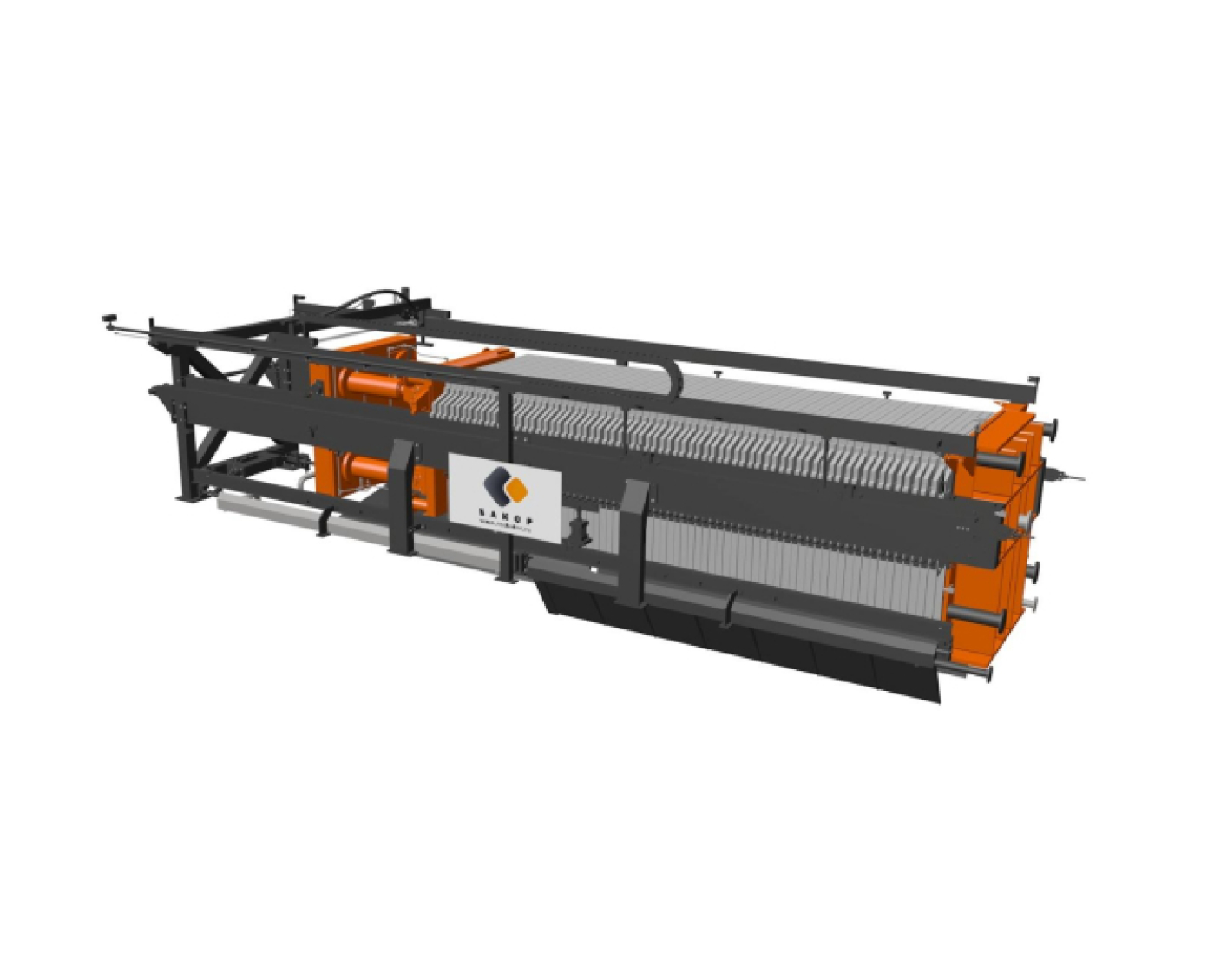
Intended use: Filtration (dewatering) of highly dispersed suspensions (pulps) of the following concentrates: copper, cobalt, nickel, lead, tin, magnetite, apatite, talc and other ores, as well as their concentration tailings.
Industries:
Principle of operation:
The pulp is injected into the filter press under high pressure into the cavities (chambers) formed between adjacent vertical plates.
During the filtration cycle, the plates are heavily pressed against each other using special hydraulic pushers to ensure leak-tightness in respect of the internal pressure acting from the pulp side.
The pressure from the pulp side acts until the filtrate passes through the filter plates and comes out in such an amount that ensures the required dewatering degree.
Applications:
Efficiency:
Duration of the main horizontal filter press operations depends on the filtered sludge properties and filtration mode.
The residual moisture content and filtrate purity depends on the correct selection of the filter membrane and filtration modes.The above described process is a batch process that is comprised of the following sequence of steps:
Closing of filter press chambers;
Chamber filling with cake;
Optional: cake pressing by a membrane/cake washing/cake air blowing;
Plate block opening and dewatered sludge (cake) discharge;
Models and specifications:
Specifications | Total filtering area, m2 | Number of plates 2*2, ea. |
|---|---|---|
HPF-400/2000 | 400 | 72 |
HPF-300/2000 | 300 | 54 |
HPF-200/2000 | 200 | 34 |
Specifications | Total filtering area, m2 | Number of plates 1.5*1.5, ea. |
|---|---|---|
HPF-200/1500 | 200 | 72 |
HPF-150/1500 | 150 | 54 |
HPF-100/1500 | 100 | 34 |
Specifications | Total filtering area, m2 | Number of plates 1.2*1.2, ea. |
|---|---|---|
HPF-100/1200 | 100 | 54 |
HPF-60/1200 | 60 | 34 |
HPF-40/1200 | 40 | 22 |
Specification and marking:
HPF-400, Horizontal press filter with a filtering area of 400 m2
Scope of supply:
Filter press
Filter press frame
Drip tray
Plate movement unit
Cloth washing unit
Plate shaking unit
Hydraulic station
Set of filter plates
Set of filter cloths
Веб-форма не найдена.